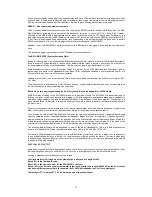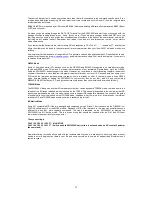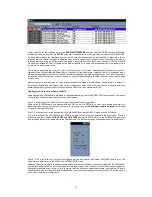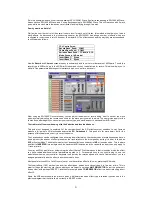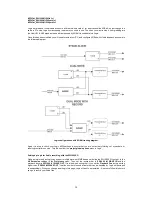
17
Chapter 4
Getting started with the bundled copy of XGWorks
XGWorks is Yamaha’s first attempt at writing a Windows based sequencer program. Most of the key information
relating to its use can be found in the PDF file and user manual that accompanies the SW1000XG itself. This chapter
aims to clarify a few points, and hopefully get your system all set up and running smoothly. We do recommend that
you read your XGWorks manual thoroughly first to familiarise yourself with the software, as with any application
package, the user manual can answer many of your first time questions. We admit though that many people, in a
hurry to get playing and writing music, just don’t bother to study their manuals, shame on you!
Ok so once you have XGWorks installed by following the instructions in the user manual. It is time to begin.
A first word of caution relates to the manual itself. One of the opening chapters seems to imply that you have to
install something called the CBX serial driver for Windows to make anything work. This is simply not the case with the
SW1000XG. It has been a source of many tech support phone calls, and so we can quite simply state here that
unless you have another module that uses the Yamaha ‘To Host’ serial port connector and wish to install the CBX
serial port driver to talk to and connect to this. That ‘
you do not have to install the CBX serial driver at all’
. The
standard set of Windows MIDI drivers that accompany your SW1000XG are fine for all of it’s operations.
XGWorks is designed to help make XG easier. It has the most complete set of editing functions for XG of any
sequencer program on the market today. Many people, even if they are hardened users of other applications such as
Cubase, Cakewalk or Logic, may begin the composition process in XGWorks if they are using an XG module or
soundcard, simply to get the correct edits and voices.
The use of drivers such as Hubis loopback isn’t really applicable to XGWorks, due to the fact that it has all of the
parameter support you will even need to get at the SW1000XG embedded within it. You can just use the standard
SW1000XG mappings for MIDI in and out in the XGWorks system setup. These are normally as follows.
‘Typical setup of the SW1000XG inside XGWorks’
MIDI thru can be set to any of the available ports, should you so wish to play other modules in your system, but the
common setup for people just using the SW1000XG typically looks like the diagram above.
With regards to the other tabs inside the setup menu, such as MIDI filtering for OUT, IN and THRU, it is very sensible
to check these are not accidentally filtering out information such as note data, or sysex data (vital for the
SW1000XG). You should also check that you have sync set to internal clock unless you are driving your copy of
XGWorks from an external sequencer device (such as a Yamaha QY tone module for example!). If XGWorks reports
a port is already in use when you close this page, then check that your ports are not assigned to more than 1 output
at the same time.









